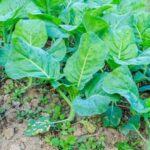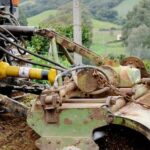Colorado’s diverse climate and stunning landscapes create a unique setting for vegetable gardening. With the rising popularity of gardening in the state, more and more people are discovering the joys of growing their own vegetables. In this blog post, we will delve into the best vegetables for gardens in Colorado, providing valuable insights and expert tips to help you cultivate a successful garden.
One of the key factors that make Colorado an ideal place for vegetable gardening is its varied microclimates. From the high altitudes of the mountains to the semi-arid plains, each region offers its own set of challenges and rewards for gardeners. Understanding how these microclimates impact your garden is crucial to ensuring its success.
Colorado’s high altitude, aridity, and temperature fluctuations pose specific challenges for vegetable gardening. However, with proper planning and techniques, you can overcome these obstacles and create an optimal environment for your plants to thrive. We will share tips and tricks on soil preparation, companion planting, water conservation, pest control, and other strategies that will help you navigate the unique conditions of Colorado.
So whether you’re a seasoned gardener looking to expand your knowledge or a beginner eager to start your own vegetable garden in Colorado, this blog post will be your comprehensive guide. From cool-season powerhouses to heat-loving champions, drought-tolerant varieties to native gems, we will cover it all. Get ready to plant the seeds of success in your very own Colorado garden.
Understanding Colorado’s Climate
Colorado’s unique climate poses both opportunities and challenges for vegetable gardening enthusiasts. Understanding the state’s climate is crucial in creating a successful garden that can withstand its high altitude, aridity, and temperature fluctuations. Colorado is known for its diverse microclimates, which can vary significantly within a short distance. This variability means that different areas of the state experience different climatic conditions, requiring gardeners to tailor their strategies accordingly.
One of the key challenges in Colorado gardening is the high altitude. The higher elevation affects both temperature and moisture levels, making it important to choose vegetables that can withstand these conditions. Additionally, Colorado’s aridity presents another obstacle for gardeners as water becomes a precious resource. However, with careful planning and proper techniques, these challenges can be overcome.
To create an optimal gardening environment in Colorado, gardeners should consider several tips and tricks. Planting windbreaks or using fences can help protect gardens from strong winds common at higher elevations. Using raised beds or containers can also help mitigate drainage issues caused by dry soils. Amending the soil with organic matter such as compost improves moisture retention and helps plants better utilize water resources.
Furthermore, choosing vegetables that are well-adapted to Colorado’s climate is essential. Some cool-season powerhouses like spinach, kale, radishes, and peas thrive early in the growing season when temperatures are still cooler. These crops often tolerate frost well and can be planted as soon as the soil is workable. On the other hand, carrots, beets, and Brussels sprouts are excellent choices for extending the growing season into late fall.
Understanding how to adapt to Colorado’s challenging climate will set gardeners up for success in their vegetable gardens. By selecting appropriate vegetables and implementing smart techniques such as proper soil preparation and irrigation methods, Coloradans can enjoy thriving gardens despite the unique aspects of their state’s climate.
| Climate Factors | Impact on Gardening |
|---|---|
| High altitude | Affects temperature and moisture levels |
| Aridity | Requires careful water management |
| Temperature fluctuations | Influences plant growth and development |
Cool-Season Powerhouses
Colorado’s cooler seasons provide a unique opportunity for vegetable gardeners to grow an array of hardy vegetables that can withstand the chilly temperatures. These cool-season powerhouses not only thrive in the early spring but also continue producing well into the late fall, allowing gardeners to extend their harvests. Here are some top choices for cool-season vegetables in Colorado:
- Spinach: Known for its nutrient-rich leaves, spinach is a versatile green that thrives in Colorado’s cooler weather. It can be sown as early as March or April and harvested continuously throughout the season.
- Kale: This leafy green is extremely cold-tolerant and can withstand frost and snow. Kale varieties such as curly kale and Tuscan kale (also known as Lacinato or dinosaur kale) are excellent options for Colorado gardens.
- Radishes: Radishes are quick to mature and can be harvested as little as three weeks after planting. They are ideal for early spring or late fall planting when the soil is still relatively cool.
- Peas: Both sugar snap peas and shelling peas perform well in Colorado’s cool weather conditions. These legumes prefer cooler temperatures and can be planted as soon as the soil is workable in early spring.
To extend the growing season in the fall, consider planting these cool-season powerhouses:
- Carrots: Carrots have a long growing season and can handle light frosts. Plant them in mid to late summer for a fall harvest when the temperatures start to drop.
- Beets: Beets are not only colorful but also cold-hardy, making them an excellent choice for fall gardening in Colorado. They can be harvested up until frost sets in.
- Brussels sprouts: A member of the cabbage family, Brussels sprouts thrive in cooler climates, making them an ideal choice for Colorado’s fall gardens. These compact plants require a longer growing season, so plan accordingly.
Incorporating these cool-season vegetables into your Colorado garden can ensure a bountiful harvest not only during the warmer months but also in the early spring and late fall. With their tolerance for cooler weather and ability to thrive in diverse conditions, these powerhouses will undoubtedly add variety and flavor to your garden all year round.
| Cool-Season Vegetables | Planting Time | Harvest Time |
|---|---|---|
| Spinach | March or April | Continuous throughout the season |
| Kale | Early spring or late summer for fall harvest | Fall harvest until frost sets in |
| Radishes | Early spring or late fall | As little as three weeks after planting |
Heat-Loving Champions
Tomatoes
One of the most beloved summer vegetables in Colorado gardens is the tomato. With their vibrant colors, juicy flesh, and rich flavors, tomatoes thrive in the state’s hot and dry summers. Varieties such as Beefsteak, Roma, and Cherry tomatoes are particularly well-suited for Colorado’s climate. To ensure successful tomato cultivation, it is important to choose disease-resistant varieties and provide them with a sunny location that receives at least six hours of direct sunlight each day.
Peppers
Another group of heat-loving vegetables that excel in Colorado’s unforgiving summers are peppers. Whether you prefer sweet bell peppers or spicy chili peppers, these plants will bring a burst of flavor to your garden.
Varieties such as Jalapeno, Anaheim, and Bell peppers are known to perform well in Colorado’s arid conditions. To achieve optimal growth for pepper plants, make sure to plant them in an area with well-draining soil and provide adequate water during the hot summer months.
Eggplant
Eggplants are heat-loving champions that can also thrive in Colorado’s challenging summers. With their glossy purple skin and versatile culinary uses, eggplants add diversity to your vegetable garden. Varieties such as Black Beauty and Hansel are known for their ability to withstand high temperatures and produce abundant crops. When planting eggplants in your garden, keep in mind that they prefer warm soil temperatures above 60°F (15°C) and require a well-drained growing medium.
Okra
For those looking to add a unique vegetable to their Colorado garden, okra is an excellent choice. Known for its distinctive slender pods and versatility in culinary dishes like gumbo or fried okra, this heat-loving vegetable thrives in warm climates like Colorado’s summers. Okra varieties such as Clemson Spineless or Louisiana Green Velvet are ideal for the state’s growing conditions. To promote successful growth, plant okra in a location with full sun exposure and well-drained soil.
These heat-loving champions can be a rewarding addition to any Colorado garden, but it is important to provide them with the care they need to thrive. To protect these vegetables from sun stress during scorching summer days, consider providing some shade using shade cloths, umbrellas, or trellises. Additionally, ensure that they receive adequate water by watering deeply at the base of the plants to encourage deep root growth.
Mulching around the plants can also help retain moisture in the soil and reduce weed competition. By implementing these strategies, you can enjoy a bountiful harvest of tomatoes, peppers, eggplants, and okra throughout the summer season in your Colorado garden.
Adaptive Strategies
Colorado’s semi-arid climate presents unique challenges for vegetable gardening, especially when it comes to water availability. In this section, we will explore adaptive strategies for growing drought-tolerant and water-wise vegetables in Colorado. By selecting the right vegetables and implementing water conservation techniques, gardeners can still enjoy a bountiful harvest while minimizing water usage.
Importance of Water Conservation
In a state known for its limited water resources, it is crucial for gardeners to adopt water-wise practices. Conserving water not only helps protect the environment but also ensures that there is enough supply for other essential uses. By choosing vegetables that are naturally drought-tolerant, we can reduce our reliance on irrigation systems and preserve precious water resources.
Recommended Drought-Tolerant Vegetables
Fortunately, there are several vegetables that thrive in Colorado’s arid conditions and require less frequent watering. These include:
- Swiss Chard: This leafy green vegetable can withstand dry spells and has deep roots that access moisture from lower levels of soil.
- Zucchini: With its large leaves shading the soil, zucchini plants help retain moisture.
- Cactus Pears: This native plant is well-suited to Colorado’s climate and produces delicious fruits while requiring minimal watering.
- Beans: Varieties such as pinto beans or black beans have adapted to arid regions and can tolerate drier conditions.
By incorporating these drought-tolerant vegetables into your garden, you can significantly reduce your water usage without compromising on harvest yields.
Water-Wise Gardening Techniques
In addition to selecting drought-tolerant varieties, there are several water-wise techniques that gardeners in Colorado can employ:
- Drip Irrigation: Instead of using sprinklers that waste water through evaporation, opt for drip irrigation systems that deliver targeted amounts of moisture directly to the roots.
- Mulching: Applying a layer of organic mulch, such as straw or wood chips, around your vegetable plants can help retain soil moisture and suppress weed growth.
- Watering Schedule: Water your vegetables deeply but infrequently to encourage deeper root growth and reduce evaporation.
Implementing these strategies will not only conserve water but also promote healthier and more resilient plants in your Colorado garden.
In the next section, we will explore the rich diversity of indigenous vegetables that can thrive in Colorado’s unique climate and contribute to a sustainable and eco-friendly gardening practice.
Native Gems
Colorado is known for its diverse native plant species, and many of these plants offer great potential for vegetable gardening. By incorporating indigenous vegetables into their gardens, Coloradans can not only add unique flavors to their meals but also contribute to the preservation of local biodiversity. Native vegetables are well adapted to the specific climatic conditions and soil types of Colorado, making them resilient and low-maintenance choices for gardeners.
Celebrating Colorado’s Native Plant Diversity
One of the key advantages of growing indigenous vegetables in Colorado is the celebration and preservation of native plant diversity. Colorado boasts a rich assortment of native plants that have adapted over centuries to thrive in the state’s unique environment. By cultivating native vegetables such as chives, Rocky Mountain bee plant, and lamb’s quarters, gardeners are not only enriching their own culinary experiences but also supporting the conservation of these important species.
The Ecological Benefits
Incorporating indigenous vegetables into Coloradan gardens brings ecological benefits as well. Native plants have established relationships with local pollinators, including bees, butterflies, and birds. As a result, growing native vegetables can help support local ecosystems by attracting and providing resources for these important pollinators. Additionally, native plants typically require fewer pesticides or fertilizers since they have developed natural defenses against common pests and diseases in Colorado.
When considering which indigenous vegetables to include in their gardens, gardeners should research which plants are suited to their specific region within Colorado. Different parts of the state may offer varying climates and microclimates, so it’s essential to select native vegetables that will thrive in those conditions. By doing so, gardeners not only contribute to safeguarding Colorado’s natural heritage but also enhance the success of their vegetable gardens.
Cultivating Success
Growing vegetables in Colorado can be a rewarding and fruitful endeavor, but it does come with its own set of challenges. To help you navigate these challenges and achieve gardening success, we’ve gathered some expert tips from seasoned Colorado gardeners.
1. Soil Preparation:
Before planting your vegetables, take the time to prepare your soil properly. Colorado’s soils are often poor in organic matter and may have high alkalinity or acidity levels. Adding compost or aged manure can help improve the soil structure and fertility. Conduct a soil test to determine the pH level and make any necessary amendments to ensure optimal growing conditions for your crops.
2. Companion Planting:
Companion planting is an effective method used by experienced gardeners to promote healthy plant growth and deter pests naturally. For example, planting marigolds alongside tomatoes can repel harmful insects, while basil planted near peppers can enhance their flavor. Research companion planting combinations that work well for the specific vegetables you plan to grow to maximize their potential.
3. Succession Planting:
In order to extend your harvest throughout the growing season, consider practicing succession planting. This involves staggering plantings of certain vegetables so that you have a continuous supply of fresh produce. For example, once you harvest lettuce or radishes early in the season, replant new seeds for a later crop.
4. Crop Rotation:
Crop rotation is essential for maintaining soil health and preventing the buildup of pests and diseases. By rotating your vegetable crops each year, you can reduce the likelihood of common Colorado garden pests like flea beetles or caterpillars infesting your plants. Plan out a rotation schedule where plants from the same family are not grown in the same location too frequently.
5. Overcoming Pests and Diseases:
Colorado’s diverse climate means that gardeners face various pest and disease challenges throughout the year. Natural pest control methods such as introducing beneficial insects and regularly inspecting plants for signs of disease can help. In case of major infestations or outbreaks, consult your local extension office for appropriate treatment options.
By following these expert tips, you’ll be well-equipped to create a thriving vegetable garden in Colorado. Remember that gardening is a continuous learning process, so don’t be afraid to experiment and adapt your approach based on your specific conditions. With patience and perseverance, you’ll enjoy a bountiful harvest of fresh and delicious vegetables from your Colorado garden.
Conclusion
In conclusion, vegetable gardening in Colorado holds immense potential for success and satisfaction. By understanding the unique climate and microclimates of the region, gardeners can overcome challenges and create optimal growing environments. Whether it’s harnessing the cool-season powerhouses for early spring and late fall harvests or cultivating heat-loving champions for the unforgiving summers, Colorado offers a wide range of vegetables that thrive in its diverse conditions.
Furthermore, embracing water-wise gardening techniques and incorporating native plants into gardens not only conserves water but also supports ecological balance. By following expert tips on soil preparation, companion planting, succession planting, and crop rotation, gardeners can maximize their yields while mitigating common challenges like pests and diseases.
It is our hope that this article has provided valuable insights and inspiration for those looking to start their own bountiful vegetable gardens in Colorado. By planting the seeds of success in their own gardens, readers have the opportunity to connect with nature, enjoy delicious homegrown produce, and contribute to a sustainable future. For further information and resources on vegetable gardening in Colorado, we encourage readers to explore local extension services, gardening communities, and publications dedicated to sustainable gardening practices.
Let your Colorado garden flourish as you embark on this rewarding journey of growing your own food. Happy gardening.
Frequently Asked Questions
What vegetables do well in Colorado?
Colorado’s unique climate and high elevation present some challenges for growing vegetables, but there are several that do well in the state. Cool-season crops such as lettuce, spinach, kale, and Swiss chard are excellent choices. They can be planted early in the season and tolerate the cooler temperatures of spring and fall.
Root vegetables like carrots, radishes, and beets also thrive in Colorado’s well-drained soil and sunny conditions. Additionally, hardier crops like broccoli, cauliflower, and Brussels sprouts can handle the occasional cold snap or frost that may occur.
What vegetables can I plant now in Colorado?
The best vegetables to plant now in Colorado depend on the specific region within the state and the current weather conditions. However, in general, mid-April to early May is a good time to start planting cool-season crops such as peas, lettuce, spinach, kale, radishes, and carrots.
These plants can tolerate cooler temperatures and even light frosts. It’s important to note that while these vegetables can be planted early in spring when soil conditions allow it, warmer weather crops like tomatoes and peppers should not be planted until after the last frost date.
When should I start a vegetable garden in Colorado?
The timing for starting a vegetable garden in Colorado depends on various factors such as your location within the state and the specific vegetables you plan to grow. In most regions of Colorado with lower elevations (below 6,000 feet), it’s generally safe to begin preparing your garden beds as early as mid-March or April once the soil is workable. However, it’s important to pay attention to the last average frost date for your area before directly sowing seeds or transplanting seedlings into your garden.
This date typically ranges from late April to mid-May in most parts of Colorado but may vary depending on altitude. Starting seeds indoors a few weeks before the last frost date is also an option to get a head start on warm-weather crops like tomatoes or peppers that require a longer growing season.

If you’re looking to get into vegetable gardening, or are just looking for some tips on how to make your current garden better, then you’ve come to the right place! My name is Ethel and I have been gardening for years. In this blog, I’m going to share with you some of my best tips on how to create a successful vegetable garden.





